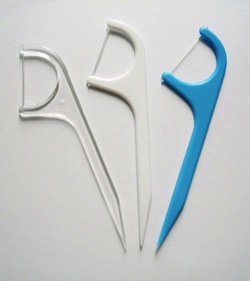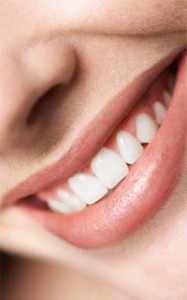Below are some of the most frequently asked questions patients have about dentistry and oral health issues. If you have any other questions, or would like to schedule an appointment, we would love to hear from you.
Please click on the question to know the answer.
Frequently Asked Questions
What should I do if I have bad breath?

Bad breath (halitosis) can be an unpleasant and embarrassing condition. Many of us may not realize that we have bad breath, but everyone has it from time to time, especially in the morning.
There are various reasons one may have bad breath, but in healthy people, the major reason is due to microbial deposits on the tongue, especially the back of the tongue. Some studies have shown that simply brushing the tongue reduced bad breath by as much as 70 percent.
What may cause bad breath?
- Morning time – Saliva flow almost stops during sleep and its reduced cleansing action allows bacteria to grow, causing bad breath.
- Certain foods – Garlic, onions, etc. Foods containing odor-causing compounds enter the blood stream; they are transferred to the lungs, where they are exhaled.
- Poor oral hygiene habits – Food particles remaining in the mouth promote bacterial growth.
- Periodontal (gum) disease – Colonies of bacteria and food debris residing under inflamed gums.
- Dental cavities and improperly fitted dental appliances – May also contribute to bad breath.
- Dry mouth (Xerostomia) – May be caused by certain medications, salivary gland problems, or continuous mouth breathing.
- Tobacco products – Dry the mouth, causing bad breath.
- Dieting – Certain chemicals called ketones are released in the breath as the body burns fat.
- Dehydration, hunger, and missed meals – Drinking water and chewing food increases saliva flow and washes bacteria away.
- Certain medical conditions and illnesses – Diabetes, liver and kidney problems, chronic sinus infections, bronchitis, and pneumonia are several conditions that may contribute to bad breath.
Keeping a record of what you eat may help identify the cause of bad breath. Also, review your current medications, recent surgeries, or illnesses with your dentist.
What can I do to prevent bad breath?
- Practice good oral hygiene – Brush at least twice a day with an IDA approved fluoride toothpaste and toothbrush. Floss daily… Replace your toothbrush every 2 to 3 months. If you wear dentures or removable bridges, clean them thoroughly.
- See your dentist regularly – Get a check-up and cleaning at least twice a year (more frequent if you have gum disease).
- Stop smoking/chewing tobacco.
- Drink water frequently.
- Use mouthwash/rinses – Prefer antiseptic rinses that kill odor-causing bacteria.
In most cases, your dentist can treat the cause. If your mouth is healthy but halitosis persists, your dentist may refer you to your physician.
How often should I brush and floss?
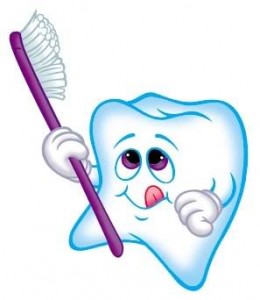
Brushing and flossing help control the plaque and bacteria that cause dental disease.
Tooth brushing — Brush at least twice a day (especially before bed) with an IDA-approved soft bristle brush and fluoride toothpaste.
- Hold at 45° to the gums; small circular motions.
- Brush outer, inner, and biting surfaces.
- Use the tip to clean the inside front teeth.
- Brush your tongue.
Flossing — Daily flossing cleans between teeth and under the gumline.
- Use 30–40cm floss; leave ~5cm working length.
- Guide gently with a sawing motion.
- Curve into a “C” around each tooth; move up/down.
Rinsing — Rinse after brushing and meals if you can’t brush.
Are amalgam (silver) fillings safe?
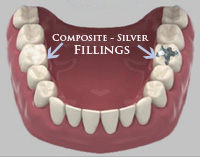
Amalgam is a blend of copper, silver, tin and zinc bound by elemental mercury, used safely for over 100 years. Major health bodies (IDA, CDC, WHO, FDA, USPHS) consider amalgam a safe, durable, and cost-effective option, except in rare allergies to its components. Alternatives include composite (tooth-coloured), porcelain, and gold. Discuss which suits you best.
How often should I have a dental exam and cleaning?
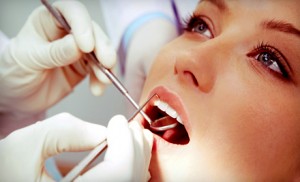
At least twice a year (or as recommended). Regular exams help detect and prevent problems early.
- Medical history review
- X-rays (decay, bone levels, root positions)
- Oral cancer screening
- Gum disease evaluation
- Decay & restoration check
- Removal of tartar and plaque
- Polishing & hygiene recommendations
- Dietary guidance
How can I tell if I have gingivitis or periodontitis (gum disease)?
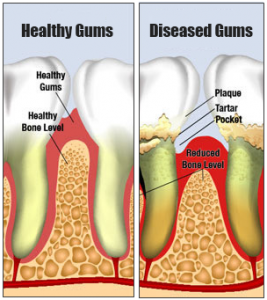
Four out of five people have some form of periodontal disease and don’t know it. Risk factors include smoking, certain dental conditions, medications, hormonal changes, systemic diseases, and genetics.
Signs: red/puffy or bleeding gums, bad breath, spacing, loose teeth, pus, recession, tenderness.
Good hygiene, a balanced diet, and regular dental visits reduce risk.
Why is it important to use dental floss?
How can cosmetic dentistry help improve the appearance of my smile?
What are porcelain veneers and how can they improve my smile?
What can I do about stained or discolored teeth?
How can I get my teeth whiter? Does whitening hurt my teeth?
Extrinsic stains (food/drink/tobacco) improve with cleanings/whitening toothpaste. Intrinsic discoloration lightens with professional peroxide gels (custom trays or in-office). When used as directed, whitening does not damage enamel. Temporary sensitivity or gum irritation can occur and is manageable.
What is the best toothbrush and toothpaste to use?
Electric brushes (Sonicare/Oral-B) are excellent; soft bristles and a head size that reaches back teeth. OTC toothpastes are broadly similar; prescription options (?5000ppm fluoride, remineralizing agents) help high-risk or sensitive teeth. Biotène is gentle for dry/sensitive gums.
What causes tooth sensitivity? How can I make teeth less sensitive?
Common causes: worn enamel, exposed roots (recession), worn fillings, decay, cracks. Use desensitizing toothpaste (potassium nitrate), high-fluoride or remineralizing pastes (Clinpro 5000, MI Paste). See your dentist to address underlying causes.
Why do my gums bleed?
Usually gingivitis from plaque/tartar or overhanging restorations. Improve brushing (2×/day, 2 minutes) and daily flossing. Blood thinners and pregnancy can increase bleeding tendency. Professional cleaning resolves inflammation.
Composite (white) vs. amalgam (silver) fillings — which is better?
Both are safe and effective. Amalgam is durable and cost-effective; composites look natural and are often more conservative. Best choice depends on tooth, size of cavity, bite forces, and cosmetic needs.
Do I have gum disease? How can it be treated?
Periodontal disease is a chronic infection of the gums, ligament, and bone—leading to bleeding, recession, and bone loss. Risk factors include diabetes and smoking. Treatment: thorough cleanings (and possibly deep cleaning), home-care coaching, and periodontal specialist referral when needed.
What can I expect at my first visit?
A comprehensive exam of teeth and soft tissues, medical/dental history review, necessary X-rays/photos, and usually a cleaning in the same visit.
...or fill in the form on our Appointments page:


